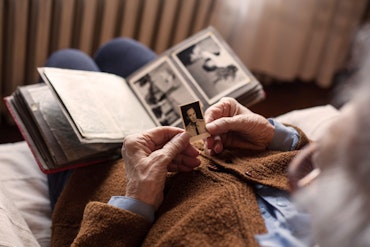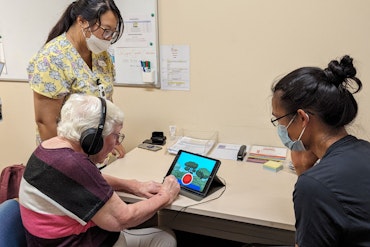Researchers break new ground in Parkinson’s disease treatment
As a person ages, their likelihood of developing Parkinson’s disease increases exponentially — the prognosis, however, is that the person’s condition will continue to worsen in severity and become debilitating.

Dr Thanh Nguyen (left) and Associate Professor Michael Lazarou (right). (Source: Walter and Eliza Hall Medical Research Institute)
Key points:
- A diagnosis of Parkinson’s in a person under the age of 50 is considered early-onset, which is rather rare and makes up one in five cases, with one in 100 people over the age of 60 receiving a diagnosis in Australia
- Parkinson’s disease impacts 10 million people globally, including 80,000 Australians
- Although incurable, new findings from the Walter and Eliza Hall Medical Research Institute (WEHI) suggest future treatment is possible in helping the human body identify and regulate damaged mitochondria
New scientific findings from the Walter and Eliza Hall Medical Research Institute (WEHI) are paving the way for treating Parkinson’s disease, a condition which is currently incurable. The disease leads to involuntary movement, tremors, depression, loss of sleep, rigid gait and vocal spasms.
Researchers suggest the future of Parkinson’s disease treatment relates to how the body identifies and rids itself of damaged mitochondria through the brain protein optineurin. Mitochondria are tiny structures found in almost all cells that are essential for the body to function as intended. When mitochondria break down, they can cause a range of diseases.
Although mitochondria help the body to regulate energy and help cells to function, damaged mitochondria leave the body vulnerable to developing various diseases. Naturally, the body reviews, removes and recycles damaged mitochondria through a process called ‘mitophagy,’ with two proteins — PINK1 and parkin — responsible for ‘tagging’ the malfunctioning genes.
In people with Parkinson’s disease, protein mutation leads to a build up of damaged mitochondria in the brain, leading to the respective symptoms. The new research, available through the publication Molecular Cell, identifies how optineurin relates to the onset of Parkinson’s disease.
Associate Professor Michael Lazarou, a Laboratory Head in WEHI’s Ubiquitin Signalling Division, says the discovery filled a knowledge gap that would transform our understanding of this cellular pathway.
“Until this study, optineurin’s precise role in initiating our body’s garbage disposal process was unknown,” Assoc Prof Lazarou, who also holds a co-appointment with Monash University, comments.
“While there are many proteins that link damaged cellular materials to the garbage disposal machinery, we found that Optineurin does this in a highly unconventional way that is unlike anything else we’ve seen from similar proteins.”
Prof Lazarou believes the finding is significant due to the fact that the human brain relies on optineurin to corrode mitochondria through the disposal process.
“Knowing how Optineurin does this provides us with a framework on how we might be able to target PINK1 and parkin mitophagy in disease and prevent the build-up of damaged mitochondria in neurons as we age,” he says.
- PINK1 identifies unhealthy mitochondria and alerts parkin of damage
- Parkin targets damaged mitochondria for removal, then the proteins work together to isolate and prepare to dispose of it
- Optineurin helps this process through binding damaged mitochondria to an enzyme known as TBK1
- From there, TBK1 activates a specific cellular system which gets rid of the damaged mitochondria
“Other proteins don’t need TBK1 to help them trigger this degradation process, making optineurin a real outlier when it comes to how our bodies remove mitochondria,” says first author Dr Thanh Nguyen.
“This has allowed us to look at the features of this pathway involving TBK1 as a potential drug target, which is a significant step forward in our search for new Parkinson’s disease treatments. The ultimate goal would be to find a way to boost levels of PINK1/Parkin mitophagy in the body — especially the brain — so that damaged mitochondria can be removed more effectively.”

Dr Nguyen says researchers hope to design a molecule that could mimic what optineurin does, so damaged mitochondria could be removed even without PINK1 or Parkin.
“Given optineurin is critical in activating the garbage disposal system in our brains, this could then prevent the accumulation of damaged mitochondria in this region, which is a significant precursor to Parkinson’s disease.”
Researchers state the clinical application of such monumental research is still years away, as validation, treatment methodology and approval are still required. The research involves a collaboration with Professor Sascha Martens’ lab at the Max Perutz Labs, University of Vienna and was supported by the National Health and Medical Research Council (NHMRC), the Australian Research Council (ARC), the Human Frontiers Science Program and Aligning
Science Across Parkinson’s (ASAP) — made possible through the Michael J. Fox Foundation for Parkinson’s Research (MJFF).























